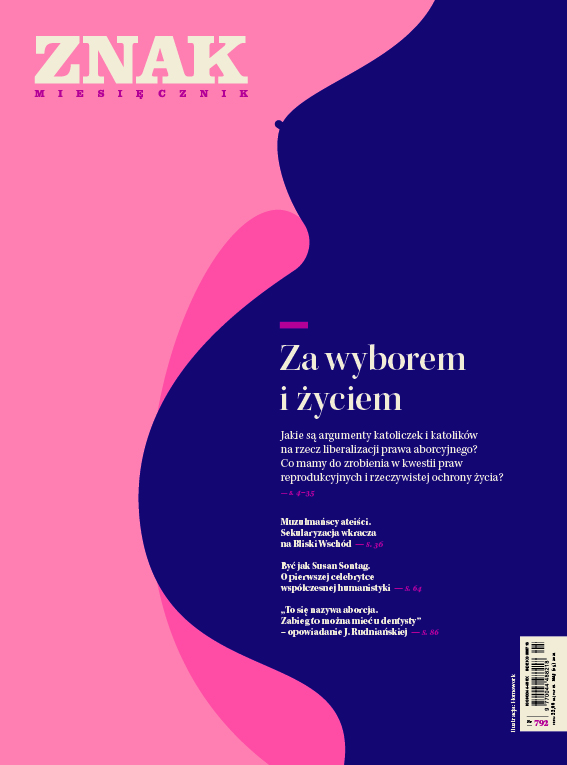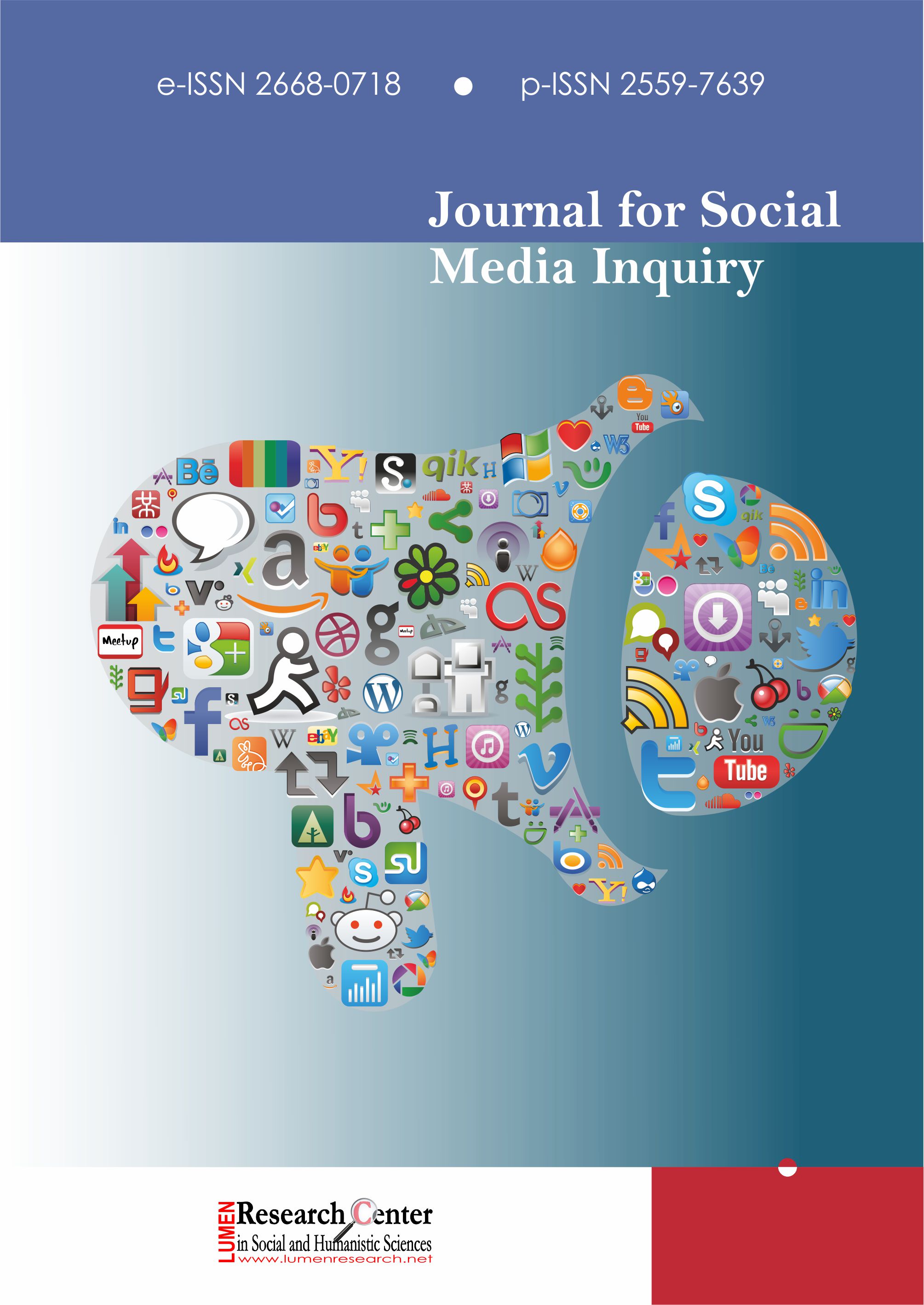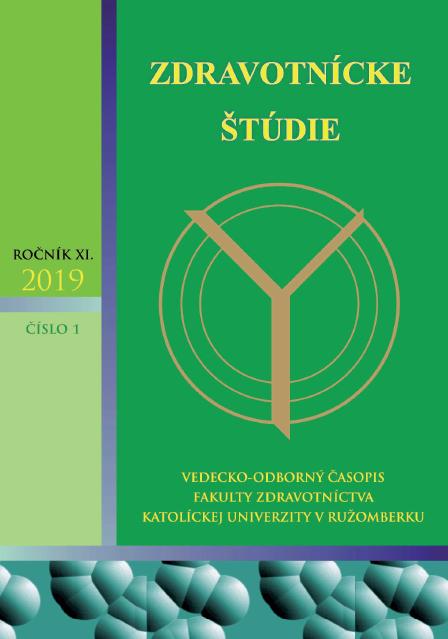
We kindly inform you that, as long as the subject affiliation of our 300.000+ articles is in progress, you might get unsufficient or no results on your third level or second level search. In this case, please broaden your search criteria.





During Covid pandemic, the automation, robotization and digitization were accelerated, but the results do not meet all expectations. Telecommunications have undeniable successes, but in other sectors the benefits of technological advancement are still missing. The "online school" and the "online procedures" of some institutions have been partially upgraded, but things have been as well in other activities which were less suitable for automation, robotization and digitization. The healthcare sector was highly stressed in the context of COVID-19 crisis, but it has not fully benefited from the advantages of the robotic vehicles. Life and death during COVID-19 crisis has affected most people, either as victims or actors in a reality that took them unprepared. Ambulances have been challenged by events which were not always managed successfully. They must respond promptly to save the lives of those who call for help. Staff in this sector are often overworked and highly stressed. The simultaneous existence of robotic ambulances that can take over some of the victims who need medical services could be both a good idea and a life-saving measure. The paper proposes implementation of existing technology for optimizing ambulance services with robotic tools and suitable for digitization. In this way, complementary solutions can be generated for increasing the quality of life, respectively for mitigating the emotional and physical stress when it comes to near death experiences. When on-site complex resuscitation and first aid maneuvers are not necessary, being required only the lifting and transportation procedures by a medical robot, the use of a robotic vehicle mitigates the ambulance’s personnel from stresses. These solutions are complementary, leading to an improvement in life’s quality.
More...
Overall, the EU's response to the COVID crisis can be said to have been one of the most ineffective in the world, overshadowed only by the catastrophic response of the US and Brazil (at least on a per capita basis). Although, one can argue more about the effectiveness or morality of the measures, I would nevertheless, like to take a step back from these discussions and consider what the non-pharmacological interventions the EU has imposed reveal about our values. The main question is: What was the axiological framework on which the EU interventions were based? To provide an answer, I will compare the EU approach with South Korea’s approach in dealing with the pandemic. The former’s approach is a traditional approach, which mostly avoids the use of advanced data analysis and predictive analysis, focusing mainly on restricting free movement through social distancing and quarantine. This is complemented by tests, which are primarily diagnostic. The latter makes full use of the most modern methods, attempting to parallel the minimisation of the use of traditional methods of restricting movement with the minimisation of deaths caused by the virus. After a more detailed presentation of the methodologies of the two sides, I will consider what these modern methods entail and what would have to be sacrificed to use them. This will reveal that giving up confidentiality is the main cost that the European community should have offered in exchange for following the South Korean path. The analysis of the data will show how privacy and other values, such as economic prosperity, education, equality, freedom, mental health and ultimately life itself, were affected by the two strategies. Based on the evidence from the analysis I will conclude that privacy is more important to the average European than any of the other proposed values, including life itself.
More...
In the context of the COVID19 pandemic, during last year all public attention has been focused on Medicine. Epidemiology is no longer just one medical specialty among many others, but became the main paradigm and the unique background of medical science. The individual pacient has turned into the collective pacient. Medical policies are not centered on the pacient anymore, but on its social group. In this article I will try to show how the characteristics of medical practice changed since the pandemic began and which are the deontological implications of such changes. With a short introduction on the medical policies proposed by the WHO during the last decades, I wish to underline the recent history of medical practice and its obvious turning point occasioned by the pandemic. Once the new bioethical vantage points are set, I wonder to which extent posthumanist philosophy foresaw this new deontological paradigm. Having Rosi Braidotti`s “The Posthuman” as my starting point, I maintain that medical doctors no longer practice on a humanist background, but with a sort of commitment that goes beyond the individual. However, this is not an antihumansit pledge, because contemporary medical doctors still adhere to certain humanist principles. As it so often happens, we will be left with even more questions. If the pacient is no longer the individual, but the group of individuals, which is the nature of a symptom and how should we decipher its meaning? How would a new medical science look like if we are to build it not on a human but on a posthuman biology?
More...
Over a million cases of infected people, thresholds and dramatic records constantly exceeded, the voices of the State and of the civil society covering each other in search of validation, an alienated and disoriented population – this is the general picture of a Romanian society trying, on one side, to understand a global phenomenon and, on the other side, to adapt to situations, norms and regulations that has not been encountered for generations. In an effervescent social, economic and political context, the Coronavirus pandemic tests the whole society and forces the State to react, both through concrete measures (rules, restrictions) and through education and awareness campaigns. The official messages transmitted by the State, through the media and in the form of commercials, advertisements, are subject to an evolution in visual and verbal aspect, which can be questioned both in terms of philosophical theories such as utilitarianism or social contract, and from the semiotic perspective of the meanings carried by these messages. How is the "common good" found in the education and awareness campaigns for wearing protective masks and for frequent sanitation and disinfection? And if Rousseau's "common good" is not fully visible in the mask that "can save your life," is the general goal of the government campaign one of a utilitarian nature? To what extent does the promise of the presence of pleasure and the absence of pain appear, as described by John Stuart Mill, in a campaign built on "saving lives" and "protecting others"? This research advances the proposition of a perception analysis of the meanings conveyed in the television commercials from the official awareness and education campaign regarding the Coronavirus pandemic, between March 2020 and January 2021, decanted in terms of basic semiotic and philosophical concepts and theories.
More...
Objective: We investigated the extent to which theuse of physiotherapeutic procedures in the treatment of secondary lymphedema helped. File and methodology: The study sample consisted of three women with secondary lymphedema after breast ablation who expressed informed consent to the use of information and data for case reports processing. We used the case report method. The material was obtained by the method of unstructured interview, direct observation of patients and the method of analysis from the medical documentation. Results: By objective measurements before and after therapy, lymphedema was reduced in all three patients. Conclusion: The results indicate the need for cooperation with a gynecologist, but also with associations helping women after breast surgery. The need to inform patients about the possibility of physiotherapy that they could receive as part of preventive treatment of lymphedema.
More...
High incidency of cardiovascular diseases within our population, particularly coronary artery disease, needs early diagnostics and treatment. Their rising prevalence in younger age population is especially disturbing. The life span has been prolonged during recent period. Criteria for evaluation of human age have changed, e.g. the ageing is within 65-75 years, very old age in 76-90 years, and senility from 91 years. The prevalency of ischemic heart disease is very high even in the middle age. There are also some differences between both genders. Microvascular changes both in the vascular system and the myocard are very imprortant. we try to detect these changes and help prevention of sudden coronary events also by methods of nuclear medicine.
More...
Aging is a natural process of life and brings many changes not only for the elderly, its surroundings, but also for the whole society. Changing the way of care for older people and their transfer to institutional care, whether social or health care facilities, necessarily requires the search for a possibility to improve communication with the old demented patient. There is a marked change in behavior among the elderly, especially in demented patients. Communication with such a patient is very difficult. Such a patient often becomes aggressive and does not cooperate. in our conditions, pharmacological treatment is undertaken to attenuate the patient without investigating the causes of aggression and unwillingness to cooperate. validation therapy is one of the possibilities of non-pharmacological therapeutic procedures. The validation method by naomi Feil offers specific therapeutic techniques and procedures for communicating with these patients in different stages of dementia. it is a method that respects the uniqueness of man with his past and at the same time solves unresolved life problems that can cause the patient’s aggression. The advantage of this method is its low demands on the provider and time. it is applicable in both domestic and institutional care for the elderly. The arguments such as the shortage of medical staff are certainly well founded. The use of validation therapy is recommended not only on the basis of theoretical knowledge, but also on the basis of personal experience.
More...
The aim of ourre view is to analyze current possibilities of laborator ydiagnosis of acute leukemias. We are based on the classification of acute leukemias WHo 2016. We analyze blood count, morphological examination of peripheral blood and bone marrow, histological examination of bone marrow, immunophenotyping by flowcytometry, cytogenetic and molecular genetice xamination. accurate and timely diagnosis of acute leukemia substantially determines the prognosis and treatment of a patient suffering from acute leukemia.
More...
Introduction: Hallux valgus also known as buckled or twisted thumb. it is a lateral defection of the subluxation of the thumb in the base joint with a varus position. Objectives: The aim of the reserach was to find out the most common reason for patient decision for halux operation. File and Methods: 67 respondents were included in the file, patients after halux surgery, regardless of age, gender and social status. The questionnaire method of it´s own construcion was used. The answer options have been adjusted five levels Likert scale (very often 1, never 5). Results: Hallux valgus significantly affects the respondent´s lives. Respondents most often reported limitation in motion, a score of 2.35, and pain with an average score 2.26. The results show that patients come to a decision more for halux operation for health reasons. overall, respondents most often leaned toward number 4 with an average of 4.13, (5 the most, 1 at least). The power of decision from aesthetic reasons, respondents most often chose number 3, with an average of 2.70. Conclusion: The results of the research show that hallux valgus is not just an aesthetic problem. it is a disease that it may have a negative health influence on the patient and most often affect the patient‘s decision for the surgical solution. However, the surviving of this disease is individual and depends on the stage of disability, age, gender, and patient‘s personality.
More...
Objectives The aim of our study was to analyze the quality of teaching and follow-up implementation of CPR (Chest Compression in Combination with artificial Breathing) in terms of changing chest compression frequency. We conducted the study under project no. 015ku-4/2018: “practical procedures for paramedics Multimedia dvd and Textbook”. Material and methods We selected a randomized controlled trial within the design of the study. a total of 113 volunteers with BMi (18.5-25) attended a 3-hour Basic Life Support Training. all participants were randomly assigned to 4 groups and each group performed CPR in a ratio 30:2, but in a different randomly generated frequency. participants of control group also performed CpR with a 30:2 ratio with a randomly generated frequency identical to other groups, but using metronome in real-time for feedback. all participants performed CPR for 10 minutes on Rescue anne QCPR, data were evaluated using the Reset anne® Wireless SkillReporter ™ program with parameters set according to the eRC 2015 guidelines. The key tracked parameters included: overall QCPR Score, Chest Compression Fraction (CCF), Chest Compression Frequency, depth of Chest Compression, Chest Wall Relaxation and effective ventilation. Results and ConclusionThe clear definition of chest compression frequency at 110 per minute led to a statistically significant improvement of overall QCpR Score compared to frequency 100 per minute or 120 per minute. The 110/minute chest compression frequency resulted in a significant increase in the number of real compressions compared to the 100/minute and did not statistically lead to a significant reduction in the depth of compression compared to the 120/minute compression frequency. in the assessment of the quality of chest compression, we concluded that it is appropriate to define the performance of the chest compression frequency for healthcare workers exactly at 110/minute, with the use of real-time feedback monitoring devices. This exact definition of a particular chest compression frequency is also appropriate for laity, with the obstruction that laymen may not have a metronome. it is possible to achieve a significantly better level of quality of urgent resuscitation and better survival of the patient. at this frequency, it is possible to statistically achieve a reasonable frequency even without the use of real time feedback monitoring devices. a statistically signifificant decrease in the quality of urgent resuscitation has occurred signifificantly after 120 seconds of its execution.
More...
The number of seniors is increasing due to prolonged life expectancy. While the spirit and psyche of the senior are flagging, the body is still functional. This paradox is increasingly described in connection with the disease and symptoms of dementia. The increasing quantitative and qualitative demands of caring for these clients determine the demands on the expertise of the direct care providers. The implementation of a new concept of caring for seniors and activating them considering the growing cognitive deficit, should be part of long-term care. innovation and the ability to innovate are currently seen as a prerequisite for competitiveness in the global market. When caring for a patient with cognitive impairment, traditional care models are not enough, which naturally creates the need to take advantage of other, new, and especially effective opportunities for knowledgeable professionals to provide quality care. in this respect it is essential to implement new knowledge and approaches into both postgraduate education and also undergraduate nursing education. in providing long-term care for the elderly, cooperation with social workers and a combination of health and social care for the individual are both necessary.
More...
Clostridial intestinal infection (CDI) is an inflammatory involvement of the colon caused by Clostridium difficile (CD) toxins and is mostly due to previous antibiotic therapy. It often occurs in immunocompromised, elderly, polymorphic patients. In recent years, there has been an increase in the incidence of CDI worldwide. Certainly it is related to massive antibiotic treatment and increasing age, patients are polymorphous and survive even in severe diseases. It appears in the form of diarrhea, the stools are numerous and small, sometimes there are tenesms that may or may not be accompanied by febrilites. despite intensive research into new drugs effective for CDI, treatment is still a major problem, especially given the high likelihood of recurrence and resistance to treatment.
More...
The paper deals with the issue of education of a patient with diabetes mellitus focused on selfmonitoring, which is a key method and possibility to influence and also the way to achieve the desired change in human behavior. The benefit of selfmonitoring along with other pillars of treatment should be good disease compensation and satisfactory health.
More...
Objectives: To find out the current status of the posture of the selected sample of children, to apply a three-month kinesiotherapeutic programme and to assess the impact of the chosen means of kinezioterapie on the posture of children. As the targets we have identified: to measure the basic height and weight parameters, to investigate the shortened and weakened muscles and to assess the incidence of children´s scoliosis. Material and methods: The method of our research was a quantitative field study. The research sample consisted of eighteen pupils of which ten were boys and eight were girls of the third class in the primary school in Demjata. The average age of children was 9 years. Our program was implemented once a week during the hours of physical education within duration of 45 minutes. During an initial diagnosis, we measured the anthropometric parameters (height and weight), then from survey data we have calculated the BMI (body mass index). Next, we used the orientation test of shortened and weakened muscles according to Janda (Janíková 1998), we evaluated the posture according to Klein, Thomas and Mayer and we also did Matthias test. For the examination of the incidence of scoliosis we used the scoliometer. Results: The positive result of the measurement somatometric values is that even one child from our research sample is not overweight according to the percentile chart of the public health Authority of the Slovak republic (2004). The most shortened muscle was trapezius. The most weakened were abdominal muscles. When evaluating posture according to Klein, Thomas and Mayera, all children are in the group of good, nearly perfect posture. The incidence of scoliosis has not been detected in any of the tested children. Conclusion: The results of the survey confirm the improvement of the posture in the studied probands after the completion of the three-month kinesiotherapeutic programme.
More...
Introduction: The patient‘s attitude is reflected in the observance of the established clinical recommendations, confidence in his attending physician, adjustments of the diet, also in regular observation of the examinations, the ratio of saving to physical exertion. Self-monitoring and preventive measures are equally important. The disease is largely influenced by the social but priority working life of the diabetic. Methodology: The data collection method was implemented using a 24-question standardized Diabetes Knowledge Questionnaire. Within the exploratory sample, we approached several self-help groups and institutions associating patients, diabetics. The survey was conducted in the period October - November 2019 and the total number was 77 respondents. Results: In our sample, self-monitoring was most often performed by measuring glucose levels at home (95.77%). More than half of the respondents (52.11%) had been checked last year by a specialist doctor. The general practitioner has sent 8.45% of the sample for eye background examination. Employment was confirmed by the respondents in less than half (45.07%), with only 10.26% of the sample had the diabetes as the reason for incapacity for work. The beneficiaries of disability pension are 30.77% of respondents. Discussion: We compared self-management with the results of other studies, where glycemic controlis recorded in les sthan a quarter of the sample examined. A high rate of change of the initial employment is confirmed diabetics in other studies. Conclusion: Diabetes mellitus has had the last three decades of increasing prevalence. For patients, an inadequate attitude to the disease then stimulates lack of its compensation.
More...
Von Willebrand disease represents the most frequent autosomally inherited bleeding disorder, with a prevalence up to 1% on the basis of epidemiological studies. The prevalence, based on the clinical significance of symptomatic patients, is most likely to be significantly lower and reaches approximately 100 per million population. Disease is caused by a deficiency and/or abnormality of von Willebrand factor (vWF), a large multimeric adhesive plasma glycoprotein, that plays an essential role in both primary and secondary hemostasis.
More...